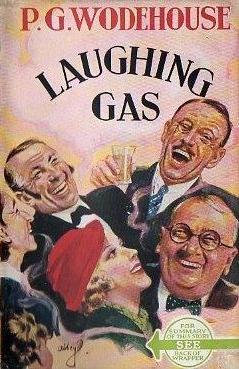“I feel sorry for her.”
“Well, she’s much, much too young to die. We’ll come back as ghosts later and apologize to her.”
The 2004 anime series Paranoia Agent, by Satoshi Kon, is a good example of a story that can’t be told with words alone. It’s essentially a visual story. As such, viewers are led to believe things that may not be true and explanations are not always spoken.
The thirteen-episode series begins like a crime story. The young designer Tsukiko Sagi is under pressure to create a new character for toys and shows that’s just as cute and bound to be more famous than her current creation, Maromi, a pink, floppy eared dog. Walking home at night, Tsukiko begins to feel the shadows turn over on her. She runs, stumbles, and then a young boy in a baseball cap and inline street skates zips up out of nowhere and strikes her with a bent metal bat. At least, that’s what we see.
In the next few episodes, news of this “li’l slugger,” reportedly an elementary school-aged boy, is everywhere. The public and the two detectives looking into it are shocked something like this could happen. Several more people, who are being driven to the end of the wits by various dark circumstances, fall victim to this mysterious kid. A boy who fits the description perfectly is apprehended by the traffic cop he strikes with his bat. This kid tells the detectives he is a righteous warrior who can see the glow of a demon, who wants to overthrow the city, on select people has a skates up behind them. He strikes them with his bat, a spiritual sword in disguise, to wound the demon. He must continue to hunt this thing down until it can no longer hide.
Is this kid the source of the crime spree? No, because he dies in police custody and the officers believe they see the li’l slugger skating away through the halls.
Then the story shifts in tone. We get an episode of women sharing ridiculous rumors about li’l slugger assaults and murders. Another one is of an animation studio working on a Maromi cartoon and the li’l slugger cracking their skulls one by one. Another one is a comical tale of three people with Maromi backpacks who try to work out their death pact (the primary wrench in the works is that a little girl wants to kill herself too).
All of this works together to deliver a principle spelled out in the final episodes, one that doesn’t explain everything we see because we believe too much of what we see is real (within the story). That principle is the latest rave is killing us all. It’s even twisting our perceptions. The Next Hot Thing everyone must have creates fear and sucks our life away. We don’t need it, if it demands so much of us. Consider a quiet life that fulfills some useful service that puts food on your table, respects yourself and your family, and doesn’t feed the machine.
I’m not recommending watching this show. Half of it is dark and ugly, and the whole may be too trippy for most people. I’m sure someone could make a decent list of truths or propositions found in the show, but I think those would be minor principles to the main one I’ve given here.









